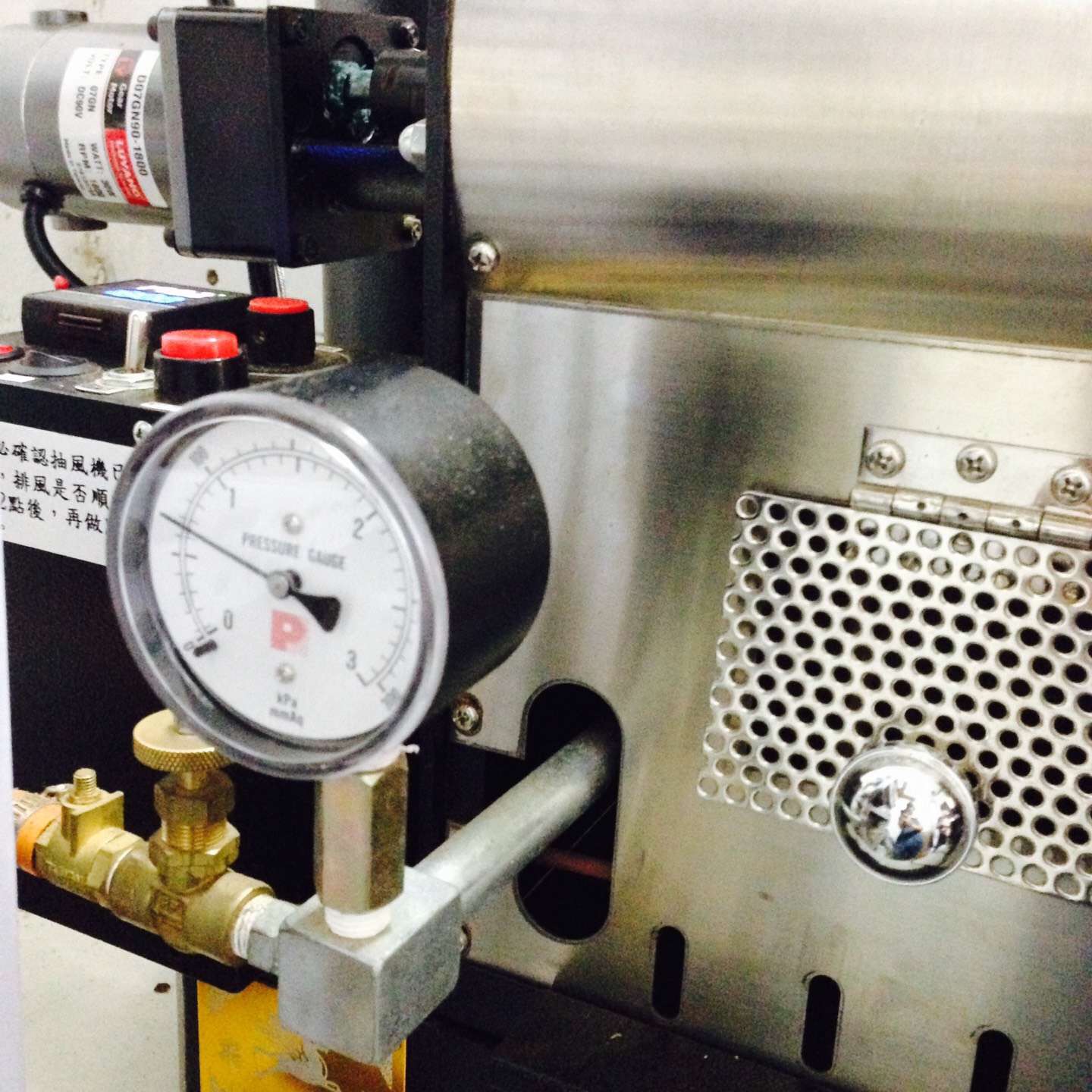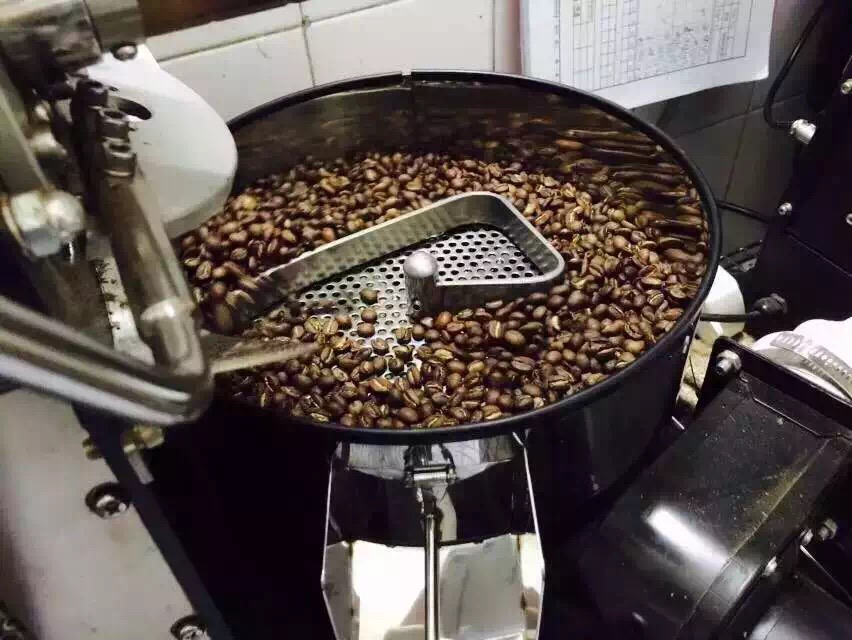The roasting of coffee has a great influence on the quality of coffee. The normal roasting procedure of coffee beans

Coffee roasting is the coking of raw coffee beans at high temperature. Roasting completely changes the substances inside the raw beans to produce new compounds, which are recombined to form aroma and mellow flavor. And this effect will only happen at high temperature, if you only use low temperature, it will not cause decomposition, no matter how long the coffee beans are not cooked.
Most people think that baking is nothing but cooking raw beans with fire. In fact, roasting is the most difficult step in the processing of coffee. It is a kind of science as well as an art. So experienced bakers in Europe and the United States enjoy a highly respected status.
Baking can be divided into three stages: drying, high temperature decomposition and cooling.
1. Drying (ie dehydration).
In our baking process, this is often the station where Xiaoyu is located.
This stage accounts for half of the whole baking process, and Xiaoyu's position is also very important in terms of time. So at this stage, Xiaoyu still has a say.
At the initial stage of dehydration, the raw beans begin to absorb heat, the internal water gradually evaporates, the color gradually changes from cyan to yellow or light brown, the silver skin begins to fall off, and a faint smell of grass can be smelled.
(interrupting) it is very reminiscent of the taste. Xiaoyu has lived in the grain pile in the big granary since childhood. He is really very emotional about this taste.
The main function of this stage is to remove the moisture from the raw coffee beans and control the temperature to indirectly control the uniform dehydration so that it will not evaporate too quickly so as to avoid scorching and blackening.
two。 High temperature decomposition
This is the station of fisher, said Xiaoyu, who is still in the assistant stage.
When roasted to about 160 degrees Celsius, the water inside the coffee bean will evaporate into gas and begin to rush out of the outside of the coffee bean.
At this time, the interior of the bean will change from endothermic to exothermic, and will burst for the first time. It turns to endothermic after an explosion, and the pressure inside the coffee bean is extremely high, reaching 25 atmospheres. High temperature and pressure began to deconstruct the original tissue to form new compounds, creating the taste and taste of coffee, reaching about 190 degrees, the conversion between endothermic and exothermic action will occur again, so the second burst, the second explosion. Coffee beans change from brown to dark brown and gradually enter the stage of re-baking.
Xiaoyu tried to tell the difference between the sound of the first explosion / the impact of beans / the second explosion in the roar of the machine, so that the hum lingered for half an hour.
3. Cooling
Coffee must be cooled immediately after roasting, quickly stop the high temperature cracking and lock the flavor, otherwise the high temperature inside the beans will continue to work and will burn off the aromatic substances.
There are two cooling methods, one is air-cooled and the other is water-cooled.
● air cooled type
The air-cooled type requires a lot of cold air to cool the coffee beans quickly within 3 to 5 minutes. in the field of professional baking, the roaster has a trailer and a rotatable push arm in the trailer. When the baking is finished, the beans are automatically sent to the trailer, which starts the fan at the bottom, blows the cold air, and stirs the coffee beans by the pushing arm to cool down. The air-cooled type is slow but clean and non-polluting, and can better retain the aroma of coffee. This kind of machine is used by selected coffee industry.
● water-cooled type
The water-cooled method is to spray a layer of water mist on the surface of coffee beans to let the temperature drop rapidly. Because the amount of water sprayed is very important, it requires precise calculation and control, and it will increase the weight of coffee beans, which belongs to the general large-scale commercial coffee roasting.
Important Notice :
前街咖啡 FrontStreet Coffee has moved to new addredd:
FrontStreet Coffee Address: 315,Donghua East Road,GuangZhou
Tel:020 38364473
- Prev

The roasting technology of coffee determines the nature of good coffee and bad coffee
Friends who don't know anything about coffee often ask me what kind of coffee is the best. Is it Blue Mountain? I generally replied that my favorite coffee is good coffee. The answer is, of course, based on quality. Whether you like Thai rice or fragrant rice, or northeast rice, first of all, the rice must be of high quality, preferably new rice, moth-free and impurity-free, and the same is true of coffee.
- Next

History of Chemex coffee pot and guidance of extraction and operation sequence
I first saw the Chemex pot in December 2002, in an art museum rather than a cafe. At that time, the Chemex pot was part of an exhibition at the San Diego Museum of Art, which focused on American art from the 1940 to 1960 Atomic Age. After the exhibition, I bought one myself to try to make coffee. I think about it for more than a decade. Since the beginning of the 21st century, Chemex coffee
Related
- What is the meaning of lactic acid fermentation with coffee bean treatment?
- How to judge the state of foam by sound?
- How does the latte pull out the unicorn pattern? Come to get for a little trick to improve the flower pull!
- Will flower pulling affect the taste of the latte?
- Do you know the history of coffee?
- The difference between honey treatment and sun washing what is raisin honey treatment?
- What kind of milk can a novice use to make coffee foam to keep the foam longer? The correct method and skills of milking tutorial sharing
- Why do washed coffee beans taste sour? Flavor characteristics of washed Coffee
- Introduction to the skill of how to practice the size and height of water injection around the circle of hand-brewed coffee
- How do beginners practice coffee flower drawing from scratch?

